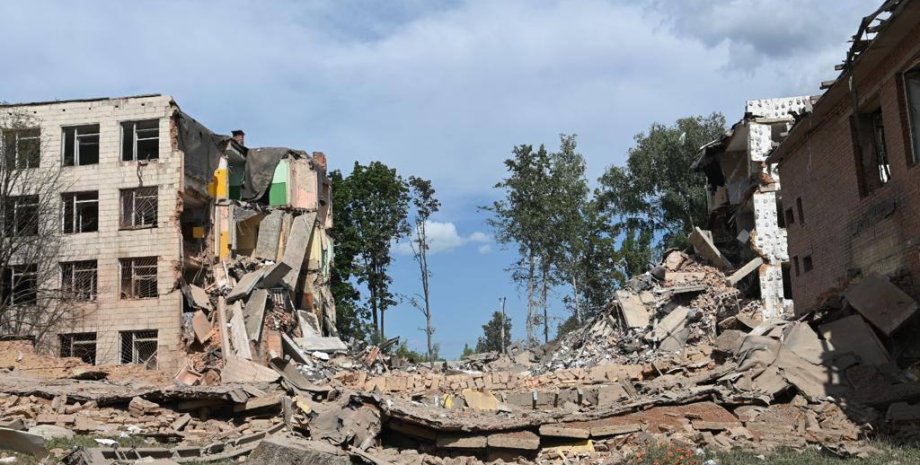
Its main task is to accept signals from above, ignoring obstacles from below. CRPA uses several antenna elements and combines their signals with the so -called phased lattice. Adaptive antennas, such as "comet", change the ray of the diagram of the signal from the obstacle to the authentic signal source by phase displacement and other manipulations. After receiving, the signal passes through a few filters, resulting in interference and then fed to the GNSS.
By shifting the signal phase when combining it with another, the antenna can selectively squeeze it and create the so -called "zero". This makes a low -power satellite signal, even if there is a more powerful interference generator nearby. As a result, a rocket or drone can fly more accurately to the target without deviating from the route even at a long distance.
The number of interference sources (or remedies that affect) that can withstand the "comet" depends on the number of elements for receiving the signal and is calculated on the principle of "N minus 1". For example, if an antenna grille has 4 elements, at least three obstacles must be created to suppress satellite navigation.
The "comets" that Russia used at the beginning of a full -scale invasion had 4 elements, but as Ukraine strengthened the radio electronic fighting systems, the developers increased their number. In 2023, they made an antenna with 8 elements, in early 2025 in Ukraine found the first "comet" with 12 antenna elements, and in March - CRPA of 16, but from a Chinese manufacturer.
OSINT analyst and Nicknielr physicist noted in a comment for Forbes that the elements need to be placed a few centimeters from each other for proper operation, which affects the size. The antenna grille with 16 elements is already quite large, but you can add more if you wish.
In May 2025, a spokesman for the "Ukrainian Volunteer Army" Serhiy Bratchuk reported that almost all Russian UAV "GERAN-2" are now equipped with a "Comet" antenna for 12 elements, and the same trend is observed on bombs with the UMPC. According to him, nothing has changed globally, since the influence of the remedies on such drones was dubious and earlier, when the elements were 8.
In 2023, a Ukrainian serviceman, a specialist in electronic wrestling, Sergey Beskrestnov reported that Russia began to put up the upgraded CRPA-Anaten Aviation bombs (CA) to protect against electronic interference. Tim Karpinski, the head of the Ukrainian Cyberraliast Hacterus Community, added that various Modifications "Comet" are used in the UAV "Orlan-10", "Orlan-30", "Cartographer", in helicopters, aircraft and other equipment.
The Russians themselves boasted that "Comet-M" helps to use Fab-2550M-62/270 bombs with a unified planning and correction module (UMPC) more effectively. According to the Main Directorate of Intelligence of the Ministry of Defense of Ukraine, an adaptive antenna with 8 elements was found in the new Russian winged rocket S8000 "Banderol". According to Sergiy Beskrest, it is the "comet". In April, Sergei Beskrestnov wrote that "comets" with 12 elements were found only in Shakhad's percussion drones.
They very much help Russian UAV to bypass the EWS system. At the time, if the expert believes, the forces of defense were not found on the trophy antennas with more than 8 elements. As reported at the General Staff of the Armed Forces, a fire started through the blows at the enterprise "Windyr-Progress". The head of the Chuvash Republic Oleg Nikolaev acknowledged that the plant had had to be stopped through drones that fell on its territory.
It is likely that he will not be able to make a CRPA "comet" for Russian military UAVs, rockets and cabin until the injury is eliminated, and this will affect the combat capability of the invaders' army, even if some of such antennas are able to put China. The Ukrainian military-political observer Alexander Kovalenko in Telegram noted that a blow to "Windyr-Progress" can deprive the Russians not only "Comet" but also of the microelectronic base for "Iskander", Onyx missiles.
"It was a complex of complex nature, focused on restrictions and even suspending the production of a large list of Russian means of damage," he emphasized. Defense forces on June 9 demonstrated the most obvious way to destroy production facilities in Russia. However, this will not stop the weapon equipped with "comets" made earlier. In this case, to fight, for example, Shahaneda, Ukrainian troops should concentrate where it flies, a sufficient number of remedies.
If there is a 12-element comet, you will need 11-12 obstacles to suppress satellite navigation signals or replace them, forcing the drone to circle in place until the fuel is over or landing. Another option, as Tim Karpinsky says, is the operation of protocol errors and data processing treated with the receiver's mathematical apparatus. In other words, you need to overload the equipment with data, which can lead to a failure in the work of the device.










All rights reserved IN-Ukraine.info - 2022